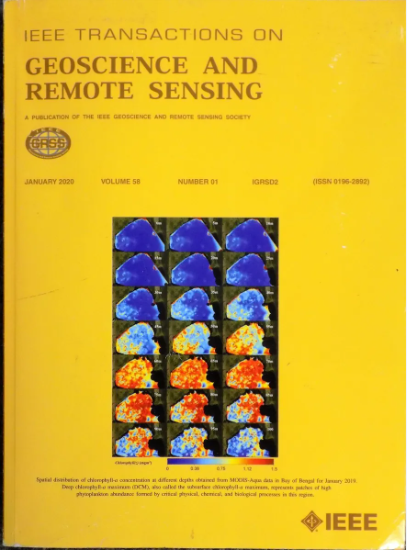Multispectral Semantic Segmentation for UAVs: A Benchmark Dataset and Baseline
IF 7.5
1区 地球科学
Q1 ENGINEERING, ELECTRICAL & ELECTRONIC
IEEE Transactions on Geoscience and Remote Sensing
Pub Date : 2024-09-10
DOI:10.1109/TGRS.2024.3457674
引用次数: 0
Abstract
Solidago canadensis L. is a typical invasive plant that has become a significant threat worldwide and profoundly impacts local ecosystems. An unmanned aerial vehicle (UAV)-based semantic segmentation (SS) system can help in monitoring the spread and location of Solidago canadensis L. To identify the growth range of this species with greater efficiency, we employ a high-speed multispectral camera, which provides richer color information and features with limited resolution, in conjunction with a high-quality RGB camera to construct a segmentation dataset. We construct a validated UAV multispectral (UAVM) dataset comprising 3260 pairs of calibrated RGB and multispectral images. All the images in the dataset underwent semantic annotation at a fine-grained pixel level, with 12 categories being covered. In addition, other plant categories can be employed in precision agriculture and ecological conservation. Moreover, we propose a benchmark model, UAVM semantic segmentation network (UAVMNet). With the aid of the feature alignment module and the UAVMFuse module, UAVMNet efficiently integrates multispectral and high-quality RGB image information, enhancing its ability to perform semantic segmentation tasks effectively. To the best of our knowledge, this is the first model to colearn semantic representations via high-quality RGB and paired multispectral information on a UAV platform. We conduct comprehensive experiments on the proposed UAVM dataset.无人机多光谱语义分割:基准数据集和基线
固体草(Solidago canadensis L.)是一种典型的入侵植物,已成为全球范围内的重大威胁,并对当地生态系统产生了深远影响。为了更有效地识别该物种的生长范围,我们采用了高速多光谱相机(可提供更丰富的色彩信息和有限分辨率的特征)和高质量 RGB 相机来构建分割数据集。我们构建了一个经过验证的无人机多光谱(UAVM)数据集,其中包括 3260 对经过校准的 RGB 和多光谱图像。数据集中的所有图像都经过了精细像素级别的语义标注,涵盖了 12 个类别。此外,其他植物类别也可用于精准农业和生态保护。此外,我们还提出了一个基准模型--UAVM 语义分割网络(UAVMNet)。借助特征对齐模块和 UAVMFuse 模块,UAVMNet 有效地整合了多光谱和高质量 RGB 图像信息,增强了其有效执行语义分割任务的能力。据我们所知,这是首个在无人机平台上通过高质量 RGB 和成对多光谱信息共同学习语义表征的模型。我们在提出的无人机数据集上进行了全面的实验。
本文章由计算机程序翻译,如有差异,请以英文原文为准。
求助全文
约1分钟内获得全文
求助全文
来源期刊

IEEE Transactions on Geoscience and Remote Sensing
工程技术-地球化学与地球物理
CiteScore
11.50
自引率
28.00%
发文量
1912
审稿时长
4.0 months
期刊介绍:
IEEE Transactions on Geoscience and Remote Sensing (TGRS) is a monthly publication that focuses on the theory, concepts, and techniques of science and engineering as applied to sensing the land, oceans, atmosphere, and space; and the processing, interpretation, and dissemination of this information.
 求助内容:
求助内容: 应助结果提醒方式:
应助结果提醒方式:


